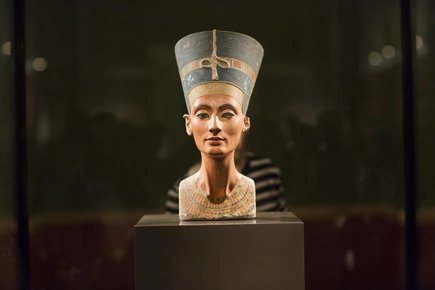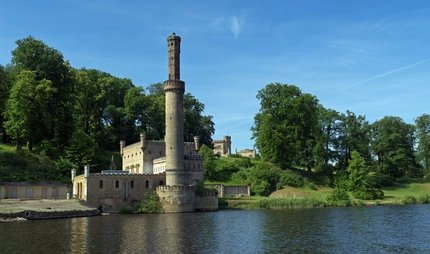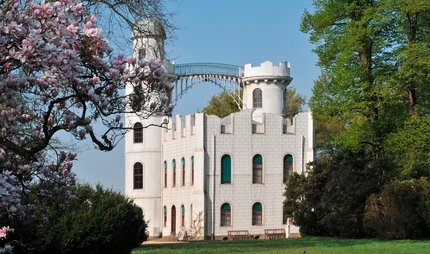
Schloss Cecilienhof
Cecilienhof is closed
Cecilienhof Palace has been closed since November 2024. The visitor reception is currently being optimised with the help of renovation measures.
Tip: The Prussian Palaces and Gardens Foundation Berlin-Brandenburg (SPSG) presents virtual tours and online exhibitions in cooperation with Google Arts & Culture. In this way, the historic palace can be experienced by a global audience.
The last palace built
For its architecture alone, Cecilienhof is not a typical palace. Instead of white towers and flowery ornaments, it has bricks and half-timbered walls. From the outside, it looks rustic yet somehow mysterious.
The last palace of the Hohenzollern dynasty was begun in 1913 and scheduled for completion in 1915. emperor Wilhelm II had it built for his oldest son, Crown Prince Wilhelm. The prince and his wife Cecilie – after whom it was named – opted for the style of an English country house, having previously lived at the Marmorpalais (Marble House), the emperor's summer residence. The architect Paul Schultze-Naumburg, a conservative proponent of traditional architecture, was commissioned to build the palace. The eccentric combination of cottage style and 55 Tudor Gothic chimney stacks was intentional on the part of the architect and adds to the palace’s unique charm, along with the dark oak beams that decorate parts of the façade.
From the early Neoclassical palace to the modern country manor
Cecilienhof Country House was built in the north of Potsdam, in the 102.5 hectare park known as the Neuer Garten. When the palace was finally completed in 1917, the crown prince and his wife had no trouble adjusting to the surroundings, because their old residence, the Marmorpalais (Marble House), was also in the Neuer Garten, just to the south, directly by the lake. The 176 rooms of Schloss Cecilienhof are spread around a number of courtyards. The crown prince’s apartment is on the first floor. There is a smoking lounge, a library, a music salon and a room designed like a cabin on an ocean liner. The interior design is characterised by its simplicity and elegance, with plenty of wood. A particular highlight is the carved wooden stairway leading to the first floor. This was a gift from the city of Danzig. Crown Prince Wilhelm and his wife Cecilie lived here until they fled in 1945.
The Potsdam Conference
At the end of the Second World War after Germany’s capitulation, the victorious allied powers met at Schloss Cecilienhof to decide on Germany’s future. The Potsdam Conference was attended by none less than Josef Stalin, Harry Truman and Winston Churchill (and later his successor Clement Attlee). Each of the “Big Three” was given their own room with its own furniture. Truman’s room, for example, had the Neoclassical furnishings from the Marmorpalais (Marble House). The original furnishings that the Hohenzollerns had left behind when they fled were taken by the Soviets to another building where they were almost completely destroyed in a fire.
The negotiations at the conference lasted from 17 July to 2 August 1945, before ending in the Potsdam Agreement. Afterwards, the great hall of the palace was converted to a conference room with a round table.



